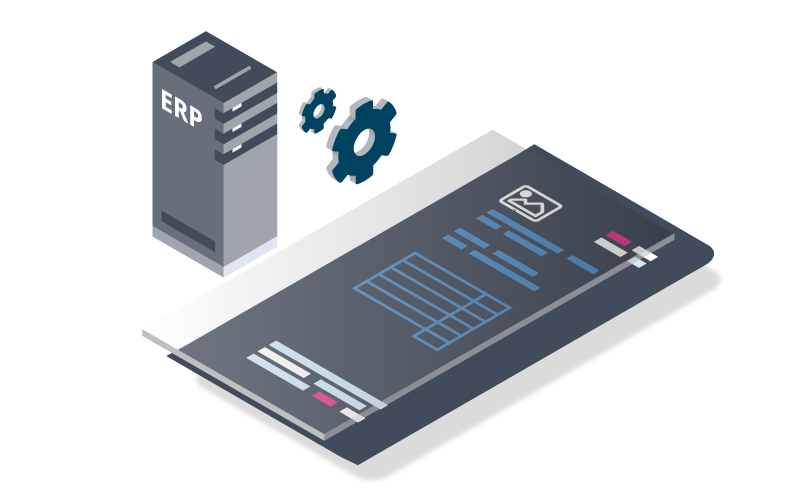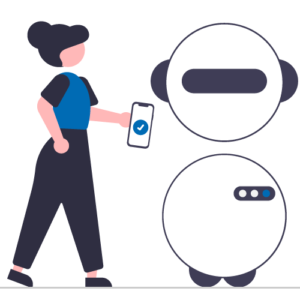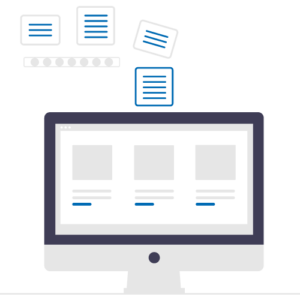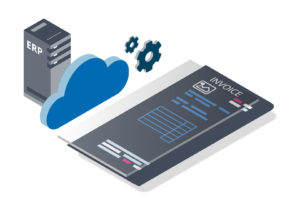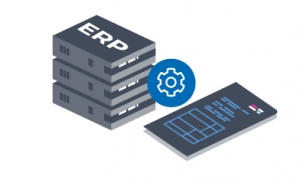Transform your organization into one that is data-driven
Reading time : 5 min
Much has been written about the importance of internal document digitization and automation. These tools can bring significant operational efficiency improvements to organizations worldwide. In addition, the last few years have seen automation become vital for productivity and the effect of this improvement on a business’s bottom line.
As vital as automating internal processes and operations is, we need to pay equal attention to ensuring inbound and outbound documents and processes function properly.
Manually retrieving data from inbound documents and entering it into your company’s ERP system can be a tedious and time-consuming task. This is where smart data extraction can empower your organization to shift from manual processing to a more efficient method that can become increasingly intelligent over time.
But first – let’s take a closer look at inbound documents
Simply put, inbound documents are documents a business receives from an external source. Two key examples are invoices and customer orders which form a vital part of any organization’s operations. Automating these document processes is essential for increased workflow speed and accurate data entry.
Invoices
Traditionally, inputting invoices manually is time-intensive and error-prone, involving multiple steps. The invoice, received from the supplier or vendor, is captured into the organization’s back-end infrastructure or ERP system, and then approved. Once payment is complete, this data is then manually entered into the Accounts Payable software.
All of this comes with very real risks, such as bottlenecks, human error, and long waits. The result? Delayed payments, often resulting in damage to the existing supplier or vendor relationship.
A staggering 71% of companies report manual data entry and incompetent Accounts Payable (AP) processes as crucial pain points.[1] Hence the need for AP function automation, which sees as many as 52% of businesses that have implemented it experiencing an approval turnaround of 4 days or less.[2]
Customer Orders
The same concerns regarding invoices apply just as much to customer orders. Did you know that manually entering just one customer order into an ERP system can take more than 4 minutes? Multiply that by the countless number of customer orders many organizations process each day. Once again, we see time-intensive processes that are a huge drain on an organization’s resources compounded by the gross inefficiencies of potential human error.
Customers form the backbone of any organization, and nurturing these relationships is key to a business’s growth and bottom-line. The automation of the customer order process is critical to manage these relationships effectively. Doing this reduces errors and saves both time and costs, in addition to improving efficiencies and productivity overall.
The how is as important as the why!
To OCR or …
For many years, Optimal Character Recognition (OCR) has been the preferred solution. It enables the analysis of printed characters, such as the shapes of words or characters on a received or ‘inbound’ document (e.g. an invoice PDF), so machine-readable data can be extracted.
However, this is no longer enough.
OCR on its own is not able to identify characters with high accuracy. As a result, this can also be highly error prone. OCR systems may misread or have difficulty identifying certain letters or characters, such as confusing the number ‘0’ with the capital ‘O’. This may seem minor, but it can affect at least 20% of the documents processed. This runs counter to the goals of increasing efficiency and productivity through automation.
The power of Artificial Intelligence (AI) and Machine Learning
OCR, combined with AI and machine learning, marks a real turning point for companies. For one thing, it allows them to analyze documents with a confidence rate of more than 95%! Document processing in turn becomes faster and more secure by minimizing human intervention and ensuring data integrity.
Furthermore, combining AI and robotic process automation (RPA) gives rise to intelligent process automation (IPA), which makes it possible to automate even more complex processes. IPA solutions can process both semi-structured data (e.g., purchase orders, invoices, etc.) and unstructured data (e.g., email, etc.). They enable organizations to extract the relevant data regardless in the format in which the inbound document is received. Said data is then automatically converted into a format that is both understood and easily integrated into the organization’s ERP system.
The value
Complete traceability throughout the Accounts Payable function is one of the main advantages of automation. This, in turn, enables two or even three-way document comparison with invoices easily validated against the original purchase orders and/ or delivery notes. In the case of customer orders, seamless integration into a company’s ERP system brings several improvements. Orders can be fulfilled in a far quicker turnaround time, and required stock levels can be far more easily managed and evaluated against customer demand. This enables proactive stock management for greater efficiency and smoother customer relationships.
The benefits are many:
- Increased productivity, allowing employees to focus on higher-value tasks.
- Reduced operational costs and risks through eliminating manual entry.
- Regulatory compliance guaranteed through automation, including data privacy and financial regulation.
- Improved customer experience and satisfaction.
The devil is in the details
Be sure to choose a paperless solution that includes OCR technology combined with AI and RPA, as well as one that allows you to:
- Streamline business processes
- Make document and data access freely available.
- Improve traceability between various departments or sites with relevant metadata recovery and proof files.
- Save time and reduce manual errors
.- Eliminate the processing times associated with manual re-entry.
- Guarantee data accuracy by extracting directly from received documents and integrating into your IT system.
- Ensure optimal recognition rates using a combination of Optimal Character Recognition (OCR) with AI and Machine Learning.
- Improve customer and supplier relations
.- Speed up Order to Cash and Purchase to Pay cycles thanks to integration between information systems.
- Work with existing partner setups without the need for changes.
- Keep exchanges easy and secure with message queues that don’t require open ports to receive documents.
Conclusion
It’s a fact! Manually entering all external or ‘inbound’ documents into your existing ERP system poses a considerable waste of time for all. Symtrax has integrated Microsoft Azure Form Recognizer, powered by AI, to address this problem. Using Machine Learning, data from any document can be extracted and integrated automatically.
[1] https://www.expenseanywhere.com/wp-content/uploads/2019/04/2019-Payables-Insight-Report_ExpenseAnywhere.pdf
[2] https://www.expenseanywhere.com/wp-content/uploads/2019/04/2019-Payables-Insight-Report_ExpenseAnywhere.pdf

